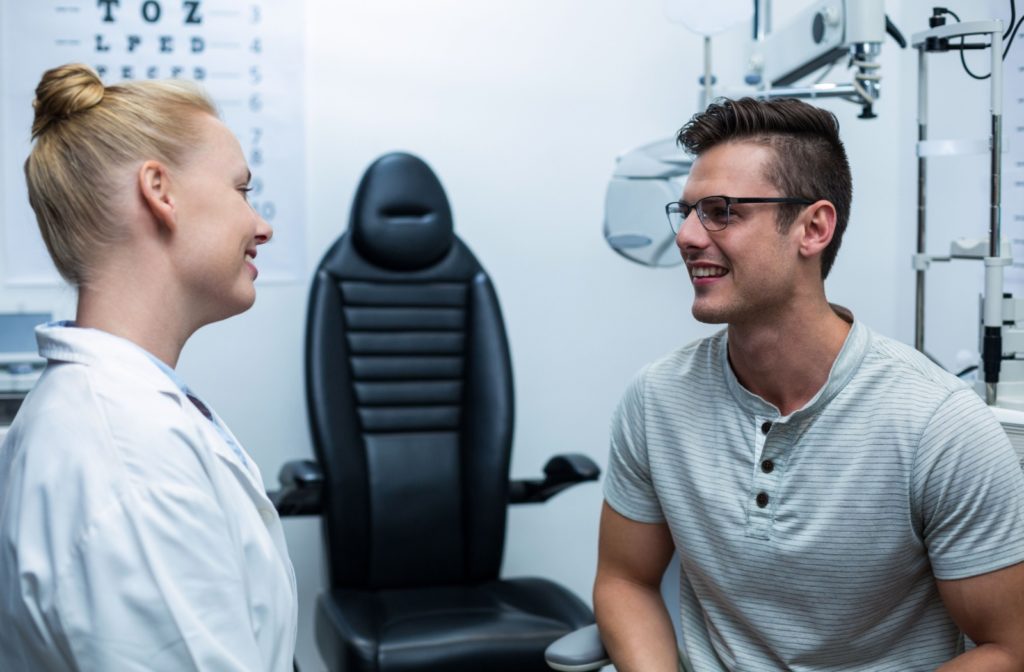Understanding the subtle yet significant differences in lens technology can be important for many people. When comparing Neurolens to prism, we’re looking at two top tier technologies in the world of vision correction.
Neurolens offers more personalized solutions to combat eye strain symptoms. Meanwhile, prism lenses have stood the test of time, known for their effectiveness in correcting double vision and alignment issues.
It’s not just a comparison; it’s about finding the right fit for your unique vision needs. Let’s look into the details behind these lenses to help you decide which might be the best choice for you.
Understanding Neurolens: More than Just Eyewear
You’ve probably heard the buzz about Neurolens glasses. But what sets them apart from your regular pair? The difference lies in their design.
What are Neurolenses?
Unlike traditional lenses, Neurolenses feature a contoured prism that adjusts how your eyes work together. This correction aims to reduce eye strain and headaches caused by overexerted visual coordination.
Who are Neurolenses for?
Who can benefit from them? Neurolenses may offer relief to people with mild to severe myopia, hyperopia, or astigmatism.
- Myopia, or nearsightedness, manifests as clear vision for close objects but difficulty in seeing distant ones.
- Hyperopia, or farsightedness, presents the opposite scenario. Close-up tasks like reading may require squinting or reliance on corrective lenses. It’s as though the eyes prioritize distant focal points, resulting in blurred vision for nearby objects.
- Astigmatism introduces additional complexity, distorting visual perception. This condition causes you to view the world through a distorted lens, where lines and shapes appear twisted and blurred due to irregular cornea or lens curvature.
Additionally, if you find yourself constantly battling headaches despite wearing glasses, Neurolenses could offer a solution.
Persistent headaches despite wearing corrective lenses can be frustrating and may indicate underlying issues with visual coordination.
One common cause of headaches related to vision is eye strain, often stemming from prolonged screen time or tasks requiring intense visual focus.
By optimizing visual coordination, Neurolenses help reduce the burden on eye muscles and minimize the associated discomfort, including headaches.
How do Neurolenses Work?
Neurolenses are engineered to address binocular vision dysfunctions.
In basic terms, binocular vision dysfunctions arise when the eyes have difficulty coordinating their movements, focus, and alignment, resulting in symptoms such as double vision, headaches, eye strain, or challenges with depth perception.
It’s like your eyes attempting to synchronize their movements to the same rhythm but continually stumbling over each other’s steps. Neorolens help by providing relief to strained eye muscles and offering a clearer and more comfortable visual experience.
Prism Lenses: Traditional Vision Correction
Before we pick Neurolenses as the ultimate fix for headaches, let’s take a moment to acknowledge prism lenses. With a solid track record in the industry, prism lenses shouldn’t be overlooked.
What are Prism Lenses?
A prism is a transparent optical element with flat, polished surfaces that bend light. When incorporated into a lens, prisms can correct or adjust the path of light entering the eye, often used in glasses to address eye alignment issues.
Adding a prism to your glasses is like having a special tool that guides light before it reaches your eyes. It ensures that light lands perfectly on the right spot in both eyes. Then, your brain puts these clear images together into one picture.
Pros and Cons of Prism Lenses
Prism lenses are effective tools for various conditions, but they’re not a one-size-fits-all solution. While they’re important for managing double vision and certain types of strabismus, they may affect the appearance of eyewear and cause peripheral vision distortions that some people find uncomfortable.
When to Consider Prism Lenses
It’s important to talk to your eye doctor to decide if prism lenses are right for your needs. They’re typically recommended for people with eye alignment issues and can also help in suppressing images from one eye in cases of lazy eye (amblyopia).
The Verdict: Neurolens or Prism?
Deciding between Neurolens and Prism isn’t about one being superior to the other; it’s about finding what’s right for you.
Understanding Your Personal Needs
Your optometrist is your guide, assessing your eye health and helping you choose the best option. Neurolenses target specific issues like headaches, while prism lenses offer a broader range of adjustments.
The Aesthetic Aspect
Don’t forget to consider the visual aesthetic when choosing your lenses. The subtler design of Neurolenses might appeal to those looking for a seamless look, while prism lenses, due to their specific corrective nature, may create more noticeable lens thickness in some cases.
The Wider World of Vision Correction
Explore other vision correction methods, like orthokeratology, which uses special contacts to reshape the cornea. These options may offer similar benefits to specialized lenses.

Ask Your Optometrist for Help
When it comes to enhancing vision and alleviating headaches, it’s important to explore these lens options as part of the broader spectrum of visual well-being.
There’s no universal solution, but with understanding comes empowerment to have educated conversations with your optometrist. Book an appointment with the team at Total Vision Ladera Ranch to discuss what option is best for you.



